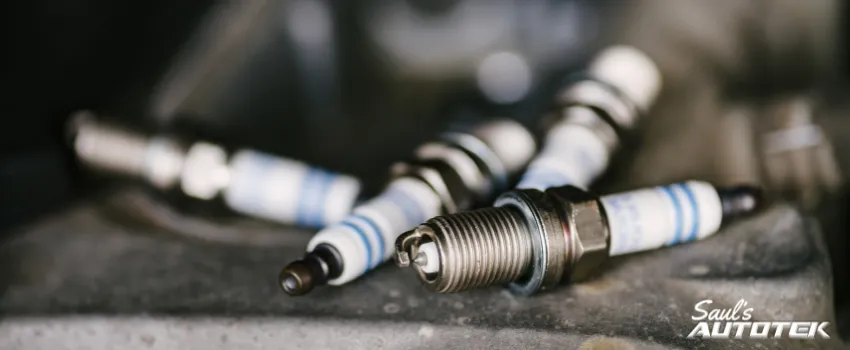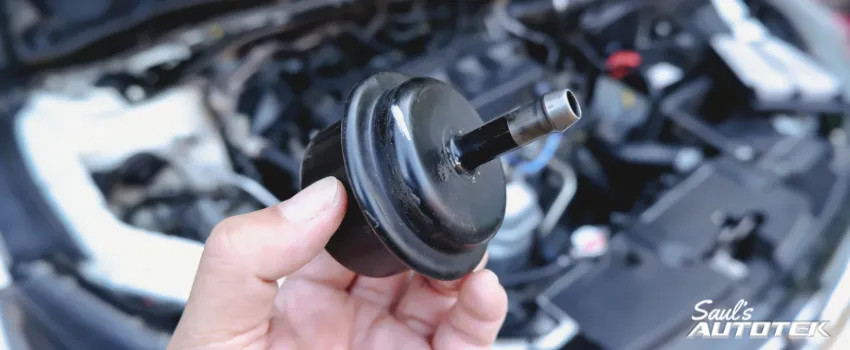I’m Saul Reisman here at Saul’s Autotek and today we’re going to talk a little bit about some new future technology that’s going to be implemented into your car that you’re going to buy in the next couple of years.
What’s often referred to in the industry as ADAS, A-D-A-S, for advanced driver assistance systems, is a program that institutes many different safety protocols in vehicles that are slowly being federally regulated into the vehicles that you drive.
Now, the first piece of this program was in 2006 with the TPMS, or tire pressure monitoring system integration in all motor vehicles sold in the United States. As a result, all new motor vehicles are required to have TPMS sensors that let you know if a tire is low or failing as a safety precaution so that you don’t find out from the poor handling the vehicle exhibits and have an accident or lose control of the vehicle as a result. A great system and a great product.
One of the systems we’re going to talk about today is actually implemented in these new Volvo‘s and has been for a couple of years now, even though it’s not quite a federal regulation just yet. I say yet because many of these new products are being designed in Silicon Valley by engineers that haven’t worked in automobiles before, but their goal is to reduce the fatalities in automobiles, and increase the safety profile and situational awareness that drivers can have inside their vehicles. If this means we add technology to vehicles so that they’re more adept and safer for you to operate, like lane departure systems, they will keep you safer as 99.7% of all automobile fatalities are the result of human error, that means 1.2 million people lose their lives every year in automobiles worldwide in entirely preventable accidents.
The worldwide project is known as Vision Zero, which started in Tel Aviv, is on a mission to reduce fatalities all around the world, specifically in dense urban areas where the most likely fatalities happened to not just vehicle drivers or passengers, but to pedestrians, cyclists, and those on the ground alike.
Volvo we’re going to use as an example has taken a few steps to make this process at least a little bit safer in the time being. First and foremost, let’s start off with the fact that Volvo was one of the only manufacturers that actually test vehicles with dummies in them of both male and female size and weight. All other vehicle manufacturers only use test dummies designed for an adult male, something to think about when you’re looking at yours.
Now we’ve got the hood up on this one right now and one thing that you’ll notice if you look at the hood where it’s sitting up, there are two latches. Now, most vehicles that you’ve operated only have one center latch and if you’ve ever had to open the hood on your vehicle, you’ll simply pull that lever down underneath the driver’s kick panel, go to the front and use one hand to pull up that center latch. Now part of the reason that Volvo uses two, is for a much-combined safety aspect that most people wouldn’t think twice about.
The reality is this vehicle has front occupant detection sensors on it, that if they detect that there is somebody in the road as an immediate hazard, like a pedestrian about to be struck by a vehicle, it will actually bend the hood intentionally and force the hood upward from the center of the vehicle as that collision occurs, and this is designed from the way that the front end of the vehicle will collapse when it strikes that object. Now that object could be as little as 65 pounds, but be enough to trigger that hood deflection system in the vehicle, which while it will create more damage to the automobile by destroying more parts of it will intentionally bow that hood front to rear. Giving that person in front of it a better chance of going up in over the vehicle, as opposed to the vehicle going over their person or over their body. That substantially increases the likelihood of survival.
One thing to keep in mind is that at a 20 mile an hour speed, a human has an 80% chance of surviving getting hit by a car. At 30 miles an hour, that’s down to 50%, and at 40 miles an hour, it’s down to 10%. the reality of this is we just need to slow down.
One other system that Volvo is currently working on is an automatic braking system that they’ve implemented in some of their vehicles as a pedestrian detection system that will automatically apply the brakes to the vehicle if it detects an occupant in front of it, that way not only will they have the safety system to hit the occupant in the safest way possible, but it will be able to do much at the slowest speed possible, and with the noise of the vehicle dipped down to further prevent the chance of the occupant going underneath the vehicle.
One system we’re going to look at as well is right over here in the side view mirror of the vehicle. Now side view mirrors really haven’t changed a lot. One thing that we think about with them from an engineering perspective is, they actually create a lot of drag on cars. Race cars don’t have side-view mirrors, most high-performance exotic cars have tiny, tiny little lightweight mirrors, because they consider them something that is just affecting the drag and slowing the vehicle down, as opposed to the reality which is not only is the side view mirrors here to keep you safe, they’re actually there to keep other drivers safe.
If we look under the mirror on this Volvo, we can actually see a camera located directly under the side. Now, this is a blind spot detection camera, and a lane departure assist since cameras. Now those two systems work together. Lane departure assist is programmed into those cameras so that they can look for the reflection of the lines on the road based on the amount of light reflecting off of them, and they use that to give a signal to the driver. Either a beep or vibration in the steering wheel to let you know if you’re drifting out of your lane, that’s one ADAS system.
Another ADAS system is that ability to detect a blind spot relocation, and you’ll get that notification lamp in your mirror, which you may see on some of your modern vehicles already, letting you know a vehicles in your blind spot, whether it’s passing you and you haven’t checked your mirror to see it, or whether it’s slowly gaining on you or you’re gaining on it, and not noticing that proximity. Those are two different ADAS systems that we anticipate seeing be federally mandated in the next few years.
The last one that we’re going to talk about on this vehicle is actually here in the rear of the vehicle. We see the cameras on the side, we see the way the hood works, the back of the vehicle there’s really not so much we can do with. I mean what happens to the back of most vehicles in terms of car accidents, is they get hit from behind, they get rear-ended. Typically at slow speeds or when they’re stopped. Unfortunately sometimes at highway speeds.
Now what Volvo has done is they’ve designed the rear of this vehicle so that upon impact it is not only curved so that it simply has some stylistic characteristics of it, but it’ll actually disperse the impact of the vehicle to both sides. Now the benefit of this is, while it will cause serious irreparable damage to the vehicle, rather than the force coming directly from one into the other and relying on just the absorption of the accordion effect of the metals and the metallurgy in the different structures of the vehicle. It’s actually distributing that force onto a different vector. Instead of that vector going straight into your vehicle, it’s directing it into two separate vectors in two separate directions.
The tangential angle of that vector being redirected to approximately a 45-degree angle to either side reduces that effect by 1.41 times and additionally cuts that effect in half by creating two vectors instead of one. Volvo has essentially reduced the rear-end structure impact that you feel in the driver’s seat by almost a three to one ratio. Simple designs like that are going to be what save lives in the future. You often hear people say that we all need to slow down, and that speed kills. The reality is the speed isn’t what kills us, it’s the stopping very quickly that seems to do a lot of damage.
Thanks to some of the engineers at Volvo who seemed to lead the way in automotive safety technology, we’re seeing ADAS systems that will soon be implemented worldwide. Currently, some manufacturers such as Brandmotion are trying to create aftermarket of these products so that we can install them in your motor vehicle.
If you’ve got a concern about yours, or you just purchased a motor vehicle that doesn’t have one of these systems and you would like it to, or maybe you’ve got an older car and you really want to keep it, but you want it to be up to date on modern safety standards to keep you protected as you and that vehicle age, come and see us here at Saul’s Autotek. We’re here seven days a week for your convenience, and we want to do everything possible to keep you safe and keep you on the road as long as possible. If that means you want to keep your old bird alive for a long time, we’re here to help. If that means you want advice on the best new technology of the best new cars on the market, come and talk to us.
We’re here to keep you informed about ADAS systems and anything else that’s coming down the pipes in modern automotive technology. See you soon.





